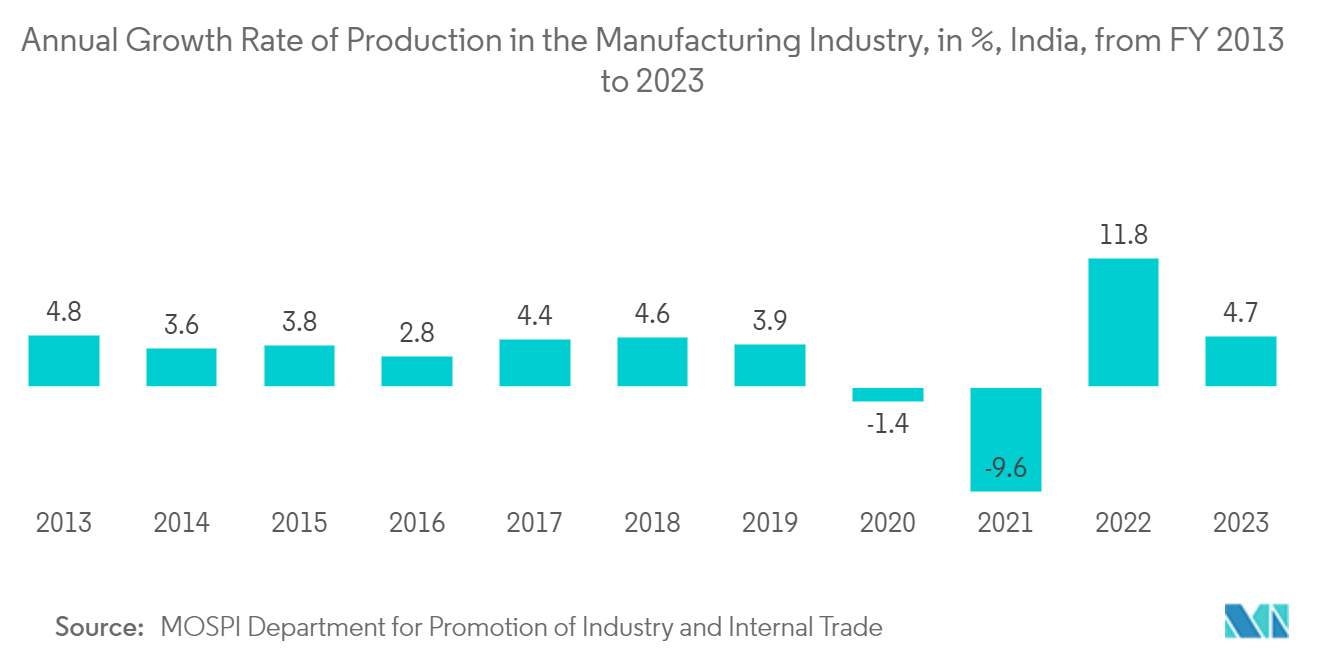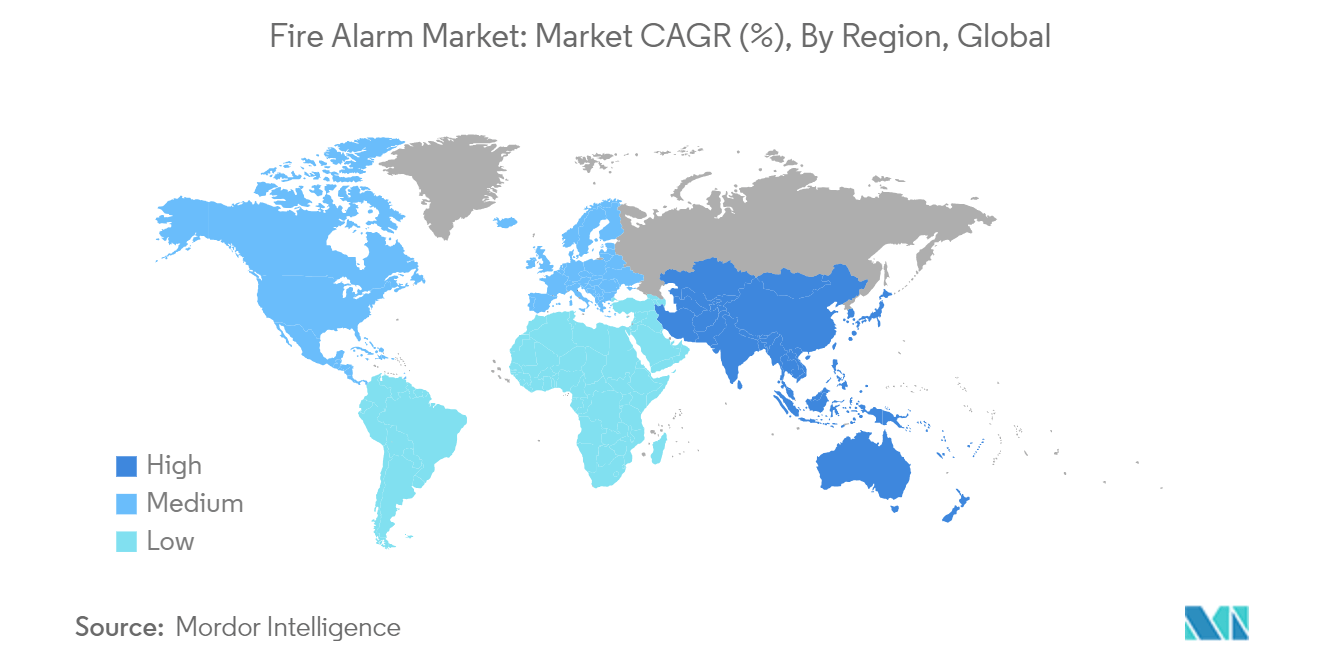Market Trends of Fire Alarm Systems Industry
Industrial End-user Segment is Expected to Hold Significant Market Share
- Industrial facilities frequently handle flammable liquids, gases, and other hazardous materials. Due to these inherent risks, there is a pressing need for sophisticated fire detection systems in these environments. These advanced systems can detect fires in their early stages, minimizing potential property damage and protecting lives. Consequently, the heightened demand for such fire safety systems in industrial sectors, especially those with a higher fire risk like automotive, petrochemical, mining, and oil & gas exploration, will be a primary catalyst for the growth of the fire alarm market.
- Further, industries comply with various safety regulations and standards, such as those set by the Occupational Safety and Health Administration (OSHA) and the National Fire Protection Association (NFPA). Compliance with these regulations often mandates the installation of effective fire alarm systems. Failure to comply can result in penalties, legal liabilities, and increased scrutiny. For instance, NFPA 72 is pivotal in the oil and gas sector, safeguarding personnel and assets. These standards outline the design, installation, and maintenance protocols for fire alarm systems, underscoring their importance in the early detection and swift response to fire incidents.
- The Indian manufacturing industry is experiencing rapid growth, driven by its increasing population. Investments in this sector have risen, and initiatives like 'Make in India' aim to transform the country into a global manufacturing hub. In the fiscal year 2023, the annual production growth rate in the manufacturing industry was 4.7%. This sectoral expansion leads to the establishment of new facilities, which require the installation of fire alarm systems as part of their safety protocols. The existing facilities may need upgrades to meet modern standards.
- For instance, in July 2024, Toshiba Transmission and Distribution Systems-India (TTDI), located near Hyderabad (India), unveiled a USD 64.9 million (JPY 10 billion and an approximately INR 500 crore) investment plan. Over the next three years, TTDI aims to boost its manufacturing capacity for both power and distribution transformers.
- The fire alarm technology evolves with innovations like Internet of Things (IoT) integration and AI-driven monitoring systems. These advancements enable real-time alerts, predictive maintenance, and refined response strategies. Such features appeal to industrial users, prioritizing reliability and efficiency, which in turn creates a favorable ecosystem for the growth of the market studied.

North America is Expected to Hold Significant Market Share
- In North America, NFPA and OSHA enforce stringent fire safety regulations. These mandates compel businesses to adopt thorough fire safety measures, prominently featuring the installation of fire alarm systems. Beyond being a legal obligation, compliance safeguards employees, mitigates liabilities, and helps businesses sidestep expensive penalties.
- In many states, the International Building Code (IBC) dictates the timing and type of fire alarm system needed for new building constructions based on occupancy type. Meanwhile, the International Fire Code (IFC) governs existing occupancies, detailing not only the required systems but also the maintenance protocols.
- The region prioritizes safety, which is paramount for workplaces and communities. This cultural emphasis drives organizations to incorporate fire alarm systems into their broader safety measures. Regular training and drills underscore the critical role of effective fire detection systems.
- North America spearheads technological advancements, especially in the safety and security domains. By harnessing cutting-edge technologies like IoT devices for real-time monitoring and AI algorithms for predictive analytics, fire alarm systems' efficacy is significantly boosted. Such innovations enhance reliability and simplify management, making these systems more appealing to businesses.
- Regional industrial diversity, spanning the manufacturing, energy, and healthcare sectors, fuels the demand for fire alarm systems. Since these industries frequently handle and process hazardous materials, they require dependable fire detection systems to safeguard facilities and personnel while remaining compliant with safety regulations.


